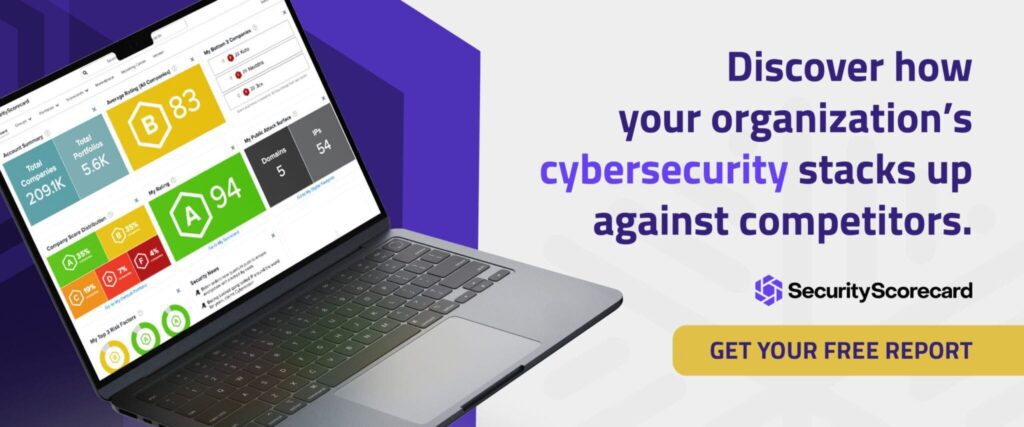Patch Cadence & Patch Management Best Practices
Nearly every digital asset an organization uses to ensure continued productivity relies on software. For example, hardware, including servers and routers, requires firmware or operating systems. Applications, even cloud-native ones, leverage code in order to work. The move towards digital transformation incorporates digital assets such as serverless functions and workloads, all of which consist of code. These digital assets are often left vulnerable because their code may have coding issues that leave them open to cyberattacks.
In order to cut down on cybersecurity vulnerabilities, companies need to employ patch cadence and management best practices.
What is patching cadence?
Patching cadence refers to how often an organization reviews systems, networks, and applications for updates that remediate security vulnerabilities. Every endpoint, whether it’s a server or a mobile device, runs on software created by code that can create backdoors which cybercriminals use to gain access to an organization’s IT ecosystem.
What are the cybersecurity risks related to patching cadence?
A large number of cyberattacks arise from commonly known vulnerabilities as set out in the Common Vulnerabilities and Exposures (CVE) list. This list consists of publicly shared software vulnerabilities, meaning cybercriminals know that they exist and seek to exploit them. According to a recent CSOOnline article, vulnerabilities for which a security patch existed led to 60% of data breaches.
In May 2020, the Cybersecurity and Information Security Agency (CISA) released “Alert (AA20-133A) Top Ten Routinely Exploited Vulnerabilities” that included the ten most exploited vulnerabilities for the period 2016-2019 as well as the top vulnerabilities exploited in 2020. The top ten list includes vulnerabilities to:
- Microsoft Office 2007 SP3/2010 SP2/2013 SP1/2016 Products
- Apache Struts 2 2.3.x before 2.3.32 and 2.5.x before 2.5.10.1
- Microsoft SharePoint
- Adobe Flash Player before 28.0.0.161
- Microsoft .NET Framework 2.0, 3.5, 3.5.1, 4.5.2, 4.6, 4.6.1, 4.6.2 and 4.7
Additional vulnerabilities apply to various instances of Microsoft Office, Drupal, Pulse Connect Secure, and Citrix.
What is a patch management process?
Establishing a patch management process acts as one of the most important controls organizations can use to prevent a cyberattack. A patch management process involves creating policies and processes for discovering, remediating, and documenting the installation of security patches on an IT organizations’ systems, networks, and software.
Patch management processes enable IT departments to prioritize and coordinate responses to vulnerabilities, ultimately mitigating the most prevalent cybersecurity risks.
What are patch cadence and management best practices?
For the most part, the best practice timeframe for installing security patches has remained the same for nearly ten years. Even in the most recent public draft updating the National Institute of Standards and Technology (NIST) Special Publication 800-53 references the 2013 “Guide to Enterprise Patch Management Technologies.” Generally speaking, best practices suggest installing critical security patches within 30 days of their release with 90 days as the outside edge of the timeline. However, since organizations often struggle to detect all services on their networks and security patches can cause downtime for critical systems, many companies need to formalize the processes and leverage patch management technologies.
Identify all systems, networks, and software
Similar to the risk assessment process, the first step in establishing a patch management process is identifying all endpoints that need monitoring. Organizations cannot secure themselves against risks they do not know about. Engaging in regular asset identification and management enables a more robust patching cadence.
Categorize by risk
After identifying all digital assets, organizations need to create a list of the highest risk locations and data. This categorization process helps IT departments prioritize patch management by giving them visibility assets that cybercriminals target most.
Establish a patch management policy
Just like a cybersecurity policy, the patch management policy acts as documentation proving that the organization has formalized processes for managing security patches. The policy should include information such as critical systems, monitoring guidelines, testing processes, and timing.
Monitor for newly reported vulnerabilities
Continuous monitoring remains a primary part of patch management as it does any cybersecurity effort. According to the website CVE Details, 12,174 new CVEs were published in 2019 alone. 1,062 of those newly published CVEs were rated High Risk, with a score of 9 or above.
Leverage automation
The overwhelming numbers of alerts and updates makes manual processes at risk of human error. No IT team can manage parsing out the constant barrage of threats to ensure continuous security and compliance. Automated vulnerability monitoring systems help prioritize these types of risks, ensuring more consistent updates, and better risk management. Organizations can choose from a wide variety of techniques including agent-based, agentless scanning, and passive network monitoring. While agent-based and agentless scanning may be the most comprehensive solutions, they also require administrative privileges on hosts which increases the attack surface. With privileged credentials increasingly a cybercriminal target, incorporating passive network monitoring into a holistic approach to patch management provides a reduced threat surface while also supporting unmanaged hosts and appliances.
Test patches
Before applying the security update, organizations should apply the patch to a sample of assets prior to releasing them across the production environment. This process, while time-consuming, ensures post-update.
Apply patches
After determining the most important patches and testing their effectiveness, the next step is to apply the patches and secure the assets.
Audit processes and report metrics
The final step before moving onto the continued iteration cycle of patch management is to engage in an audit and report on key metrics. Key metrics for reporting a patch management program’s effectiveness include:
- How much of the IT ecosystem a patch secures
- How rapidly the organization applied the patches
- How much downtime occurred during the patch deployment process
- Whether the patching process met organizational industry-standard compliance and regulatory mandates
SecurityScorecard enables security patch management best practices
SecurityScorecard’s security ratings platform includes patching cadences as one of its ten risk factor groups. Our platform engages in passive network monitoring, giving organizations an outside-in look at their controls’ effectiveness.
We continuously monitor and alert organizations to new risks, including high-risk security patch updates, and provide at-a-glance visibility into customers’ security posture using an easy-to-read A-F rating scale.
As part of our patching cadence risk factor, we incorporate a review of operating systems, services, applications, software, and hardware for a holistic approach to external patching management.
Patch Cadence & Management Frequently Asked Questions
What is NIST control for patching?
The NIST control for patching is a management guideline that helps organizations reduce cyber risks by establishing detailed strategies for patching cadence.
What is the best practice for patch management?
The commonly followed best practice for patch management includes installing critical patches within 30 days of their release with 90 days as the outside edge of the timeline.
Why is patch management important?
Implementing patch management can help improve security functions and strengthen performance. Patches are designed to address security risks that your organization may be open to, and failure to apply them quickly and efficiently can lead to breaches that are both costly and result in diminished productivity.
What are three types of patch management?
Implementing patch management can help improve security functions and strengthen performance. Patches are designed to address security risks that your organization may be open to, and failure to apply them quickly and efficiently can lead to breaches that are both costly and result in diminished productivity.






